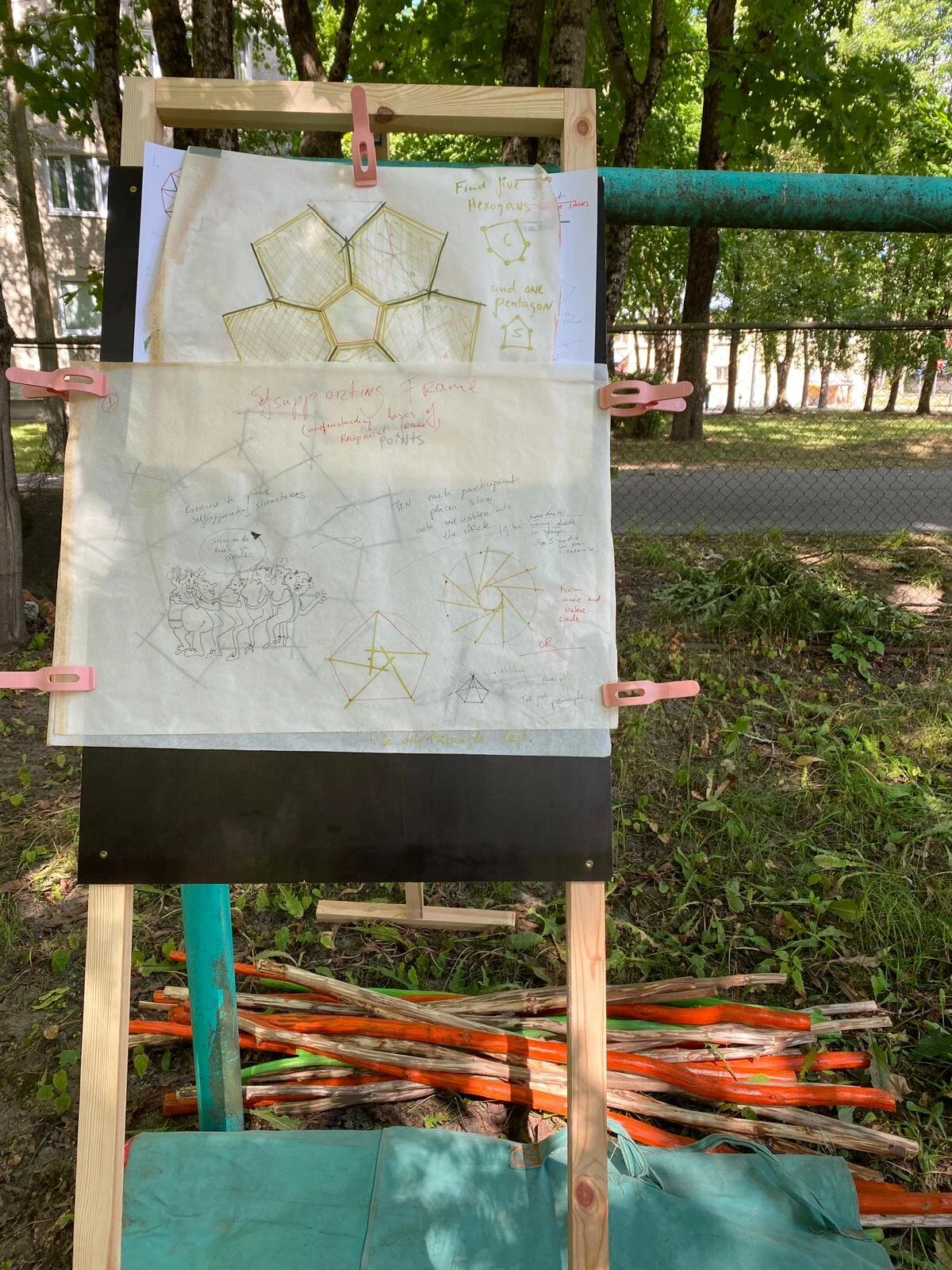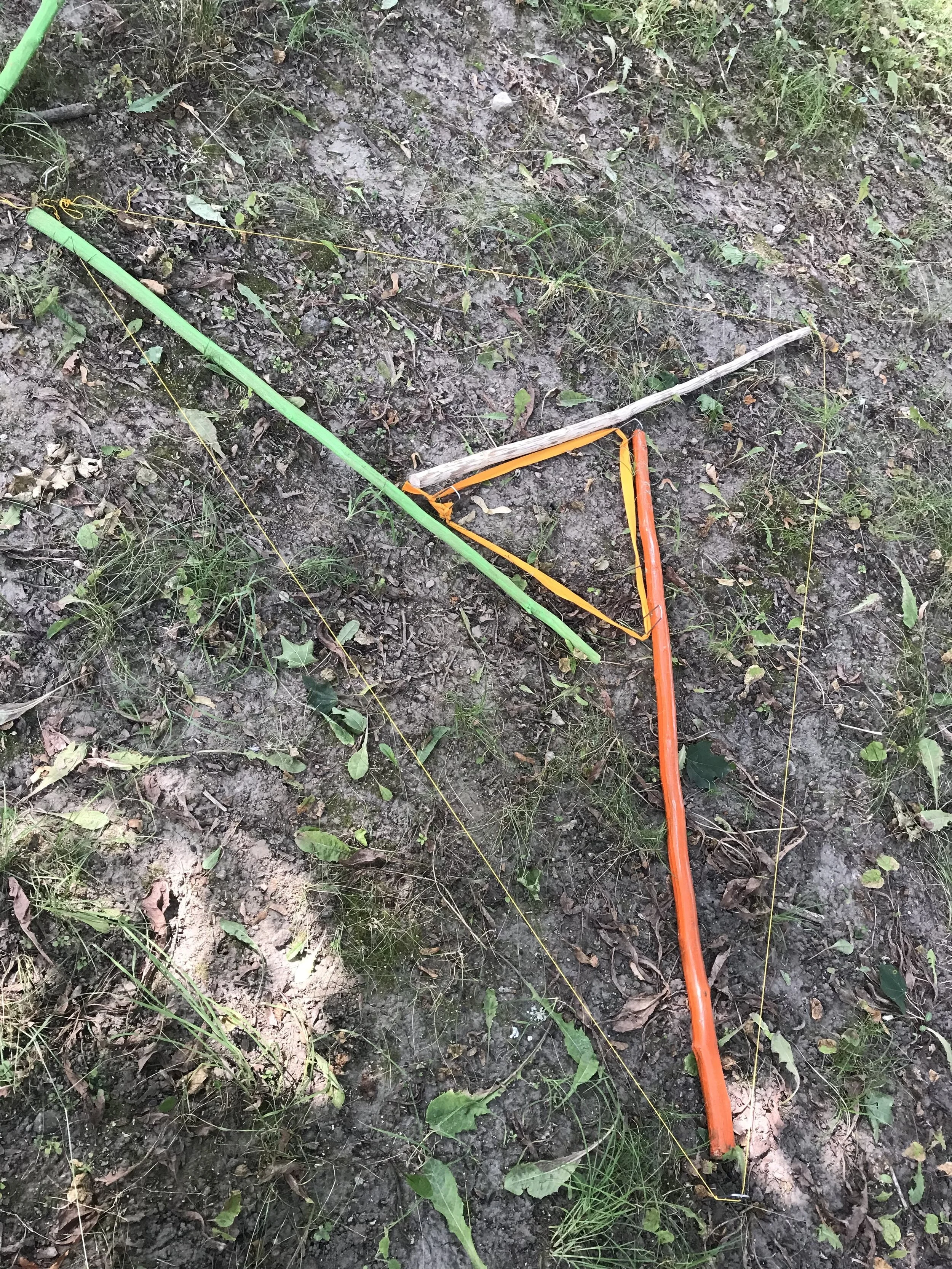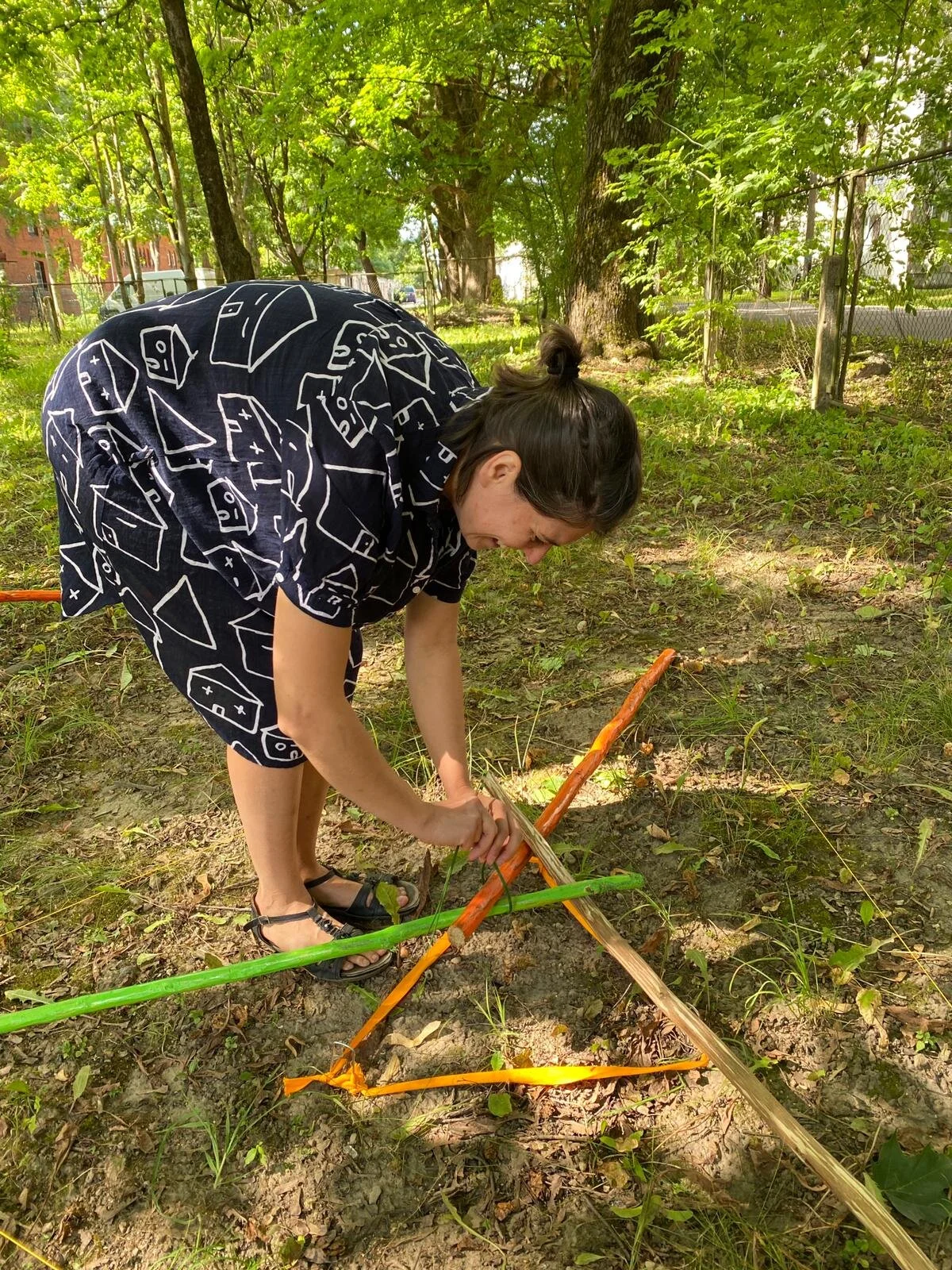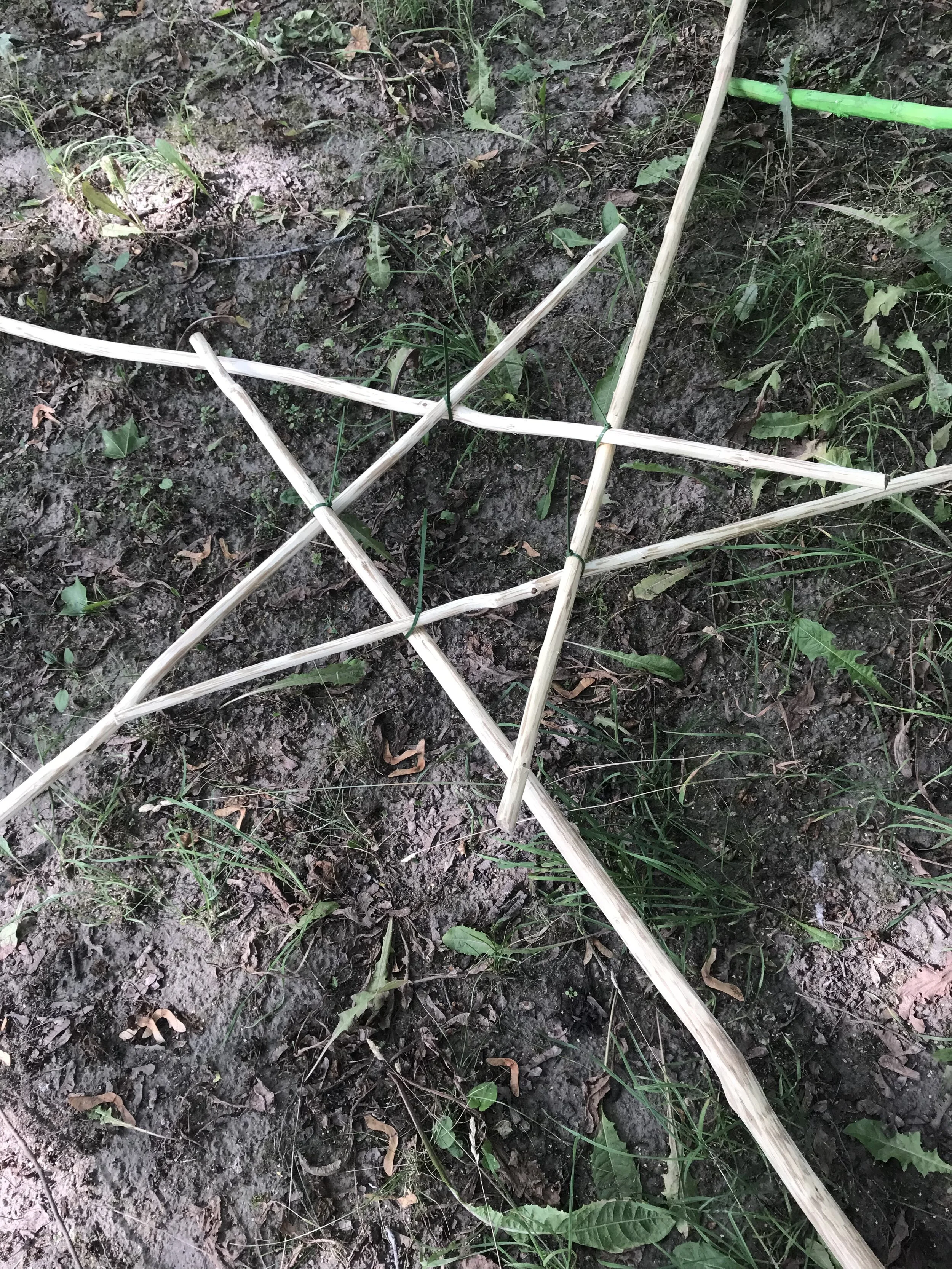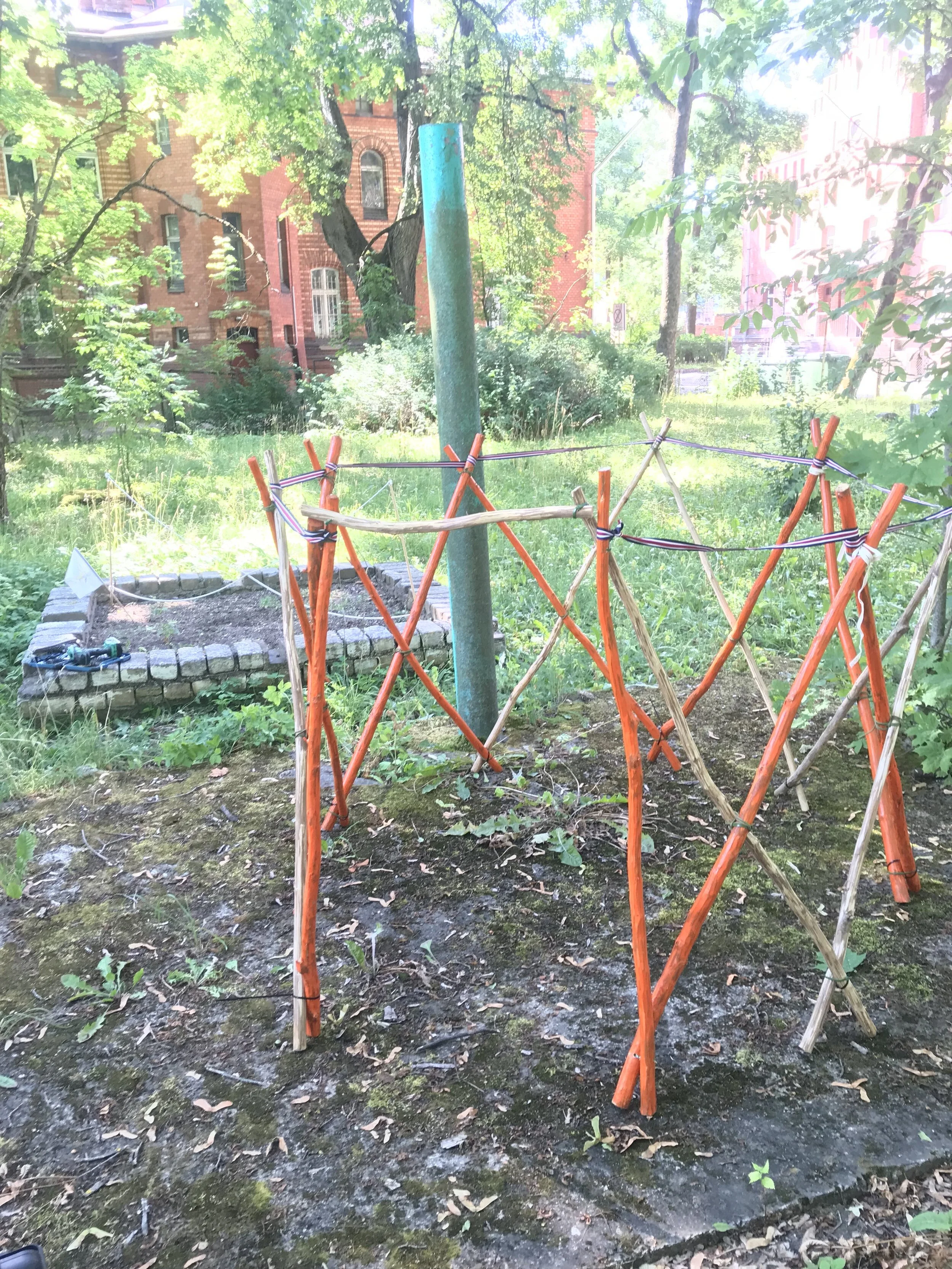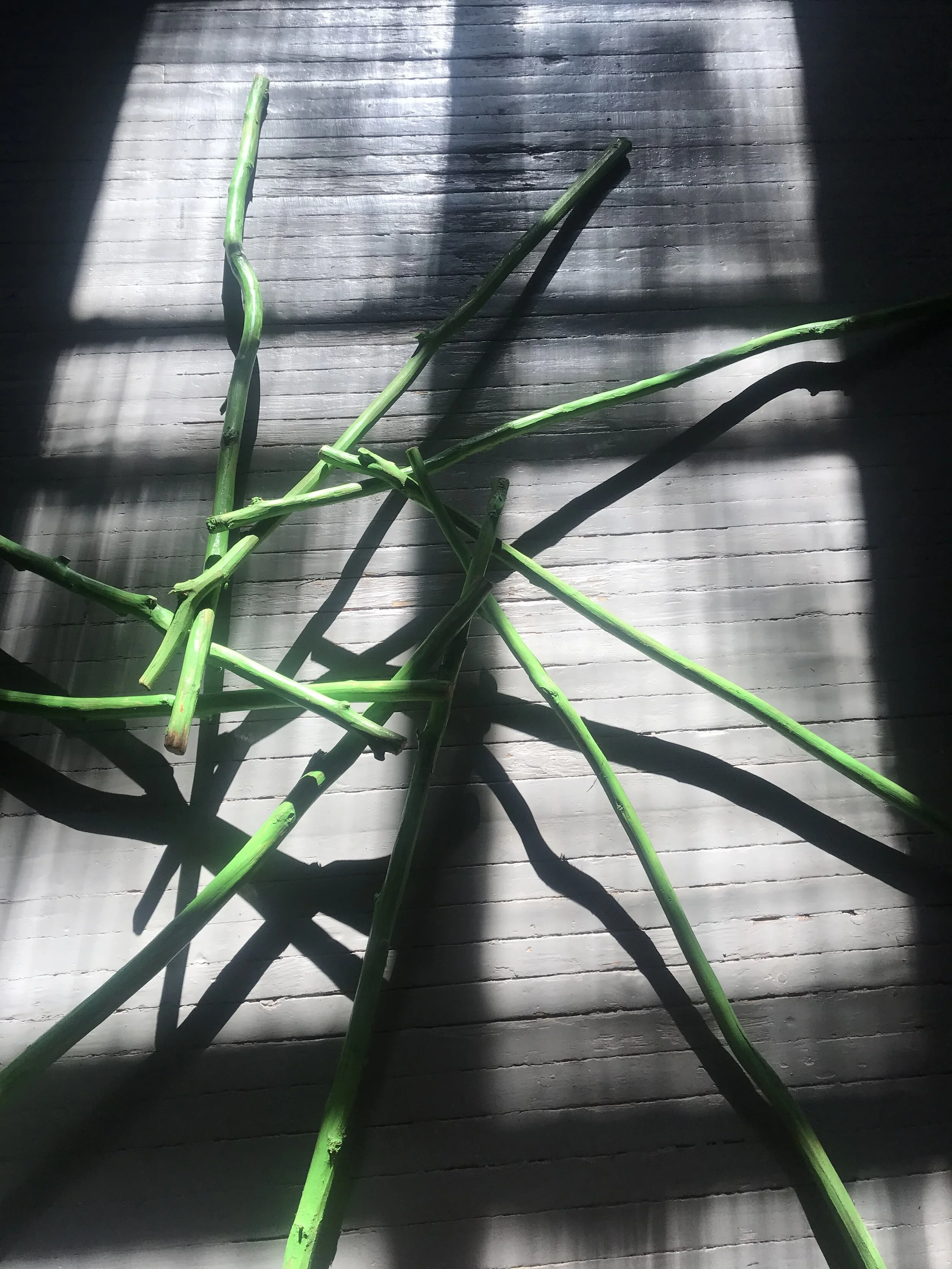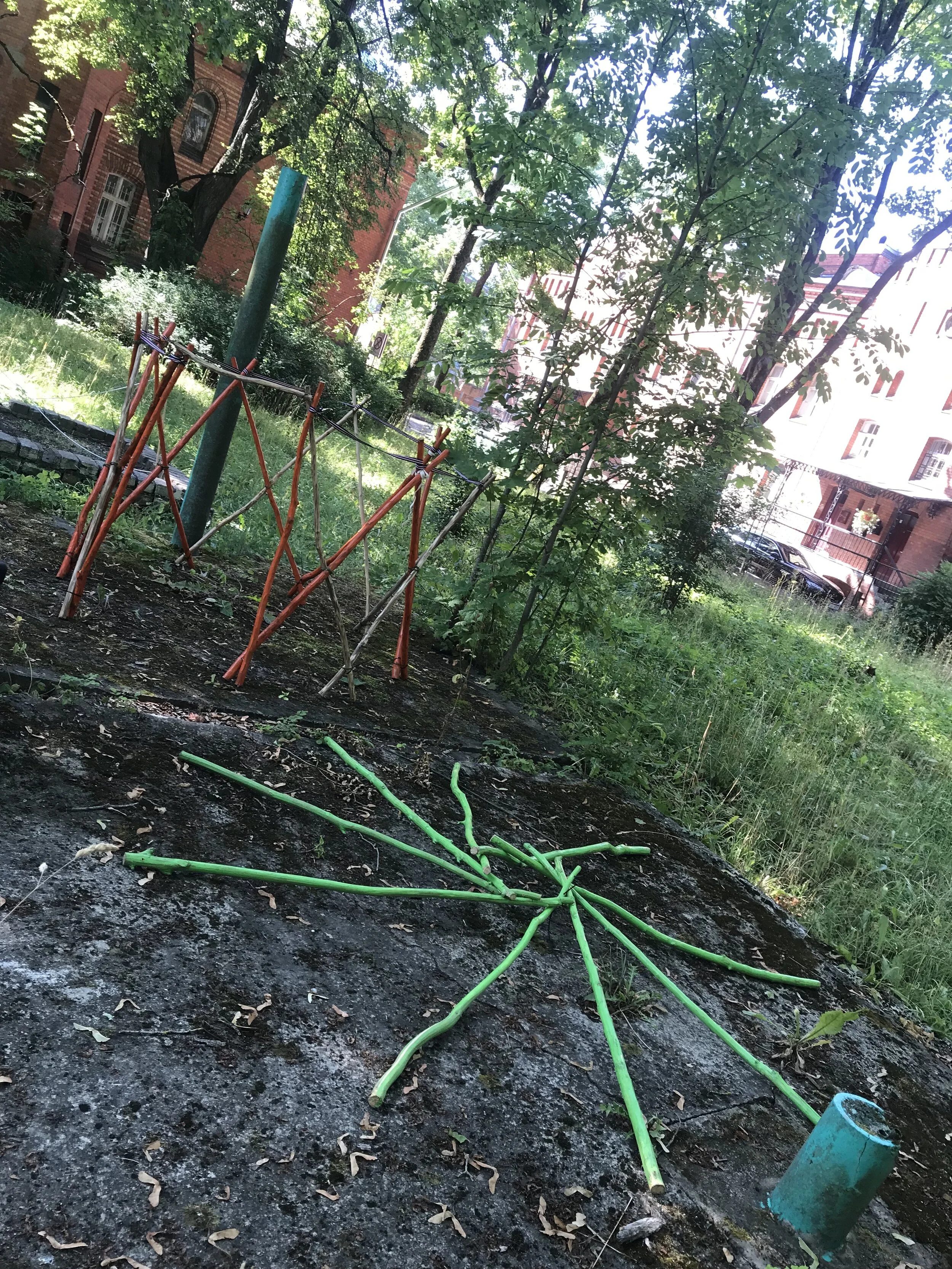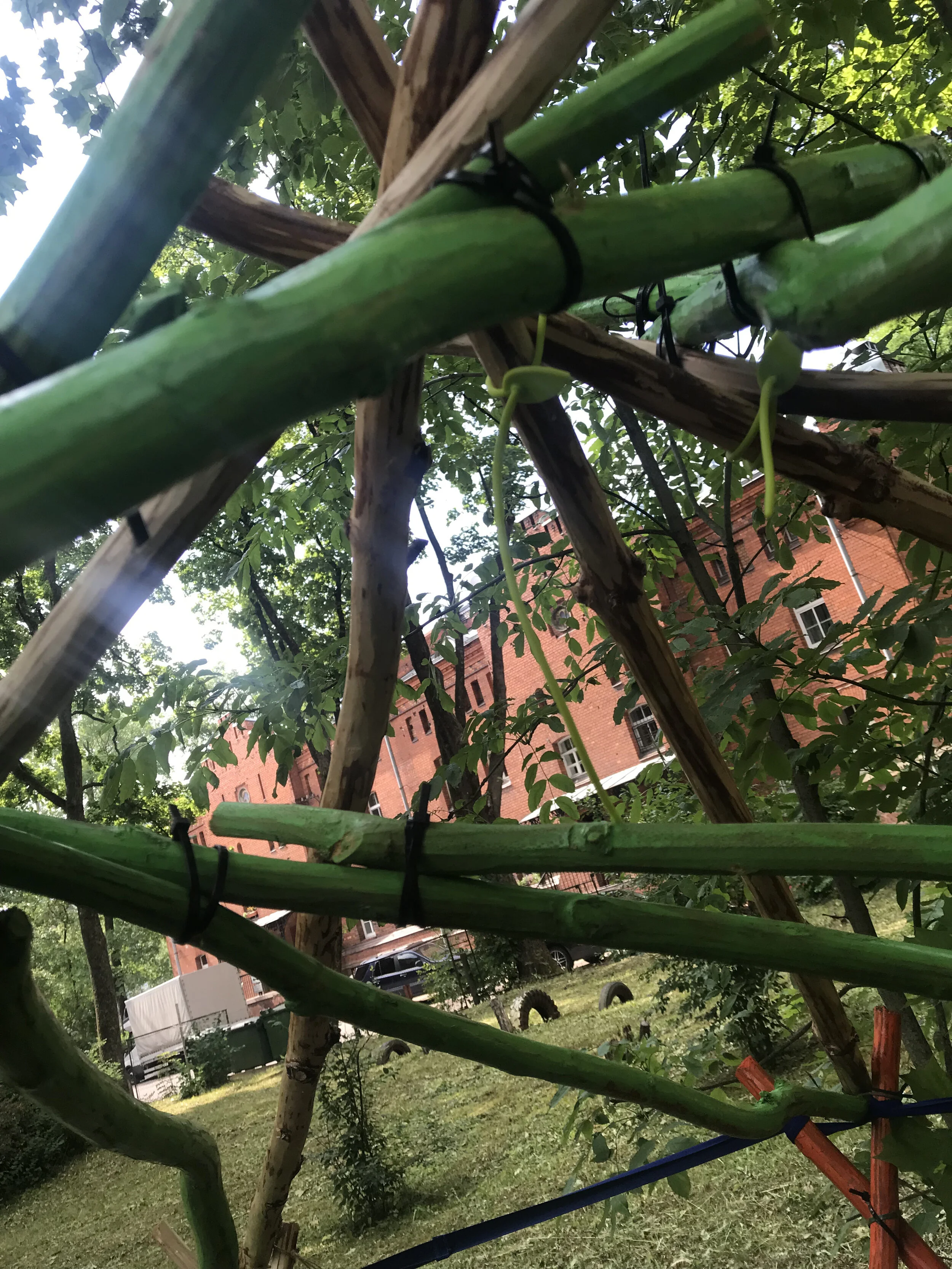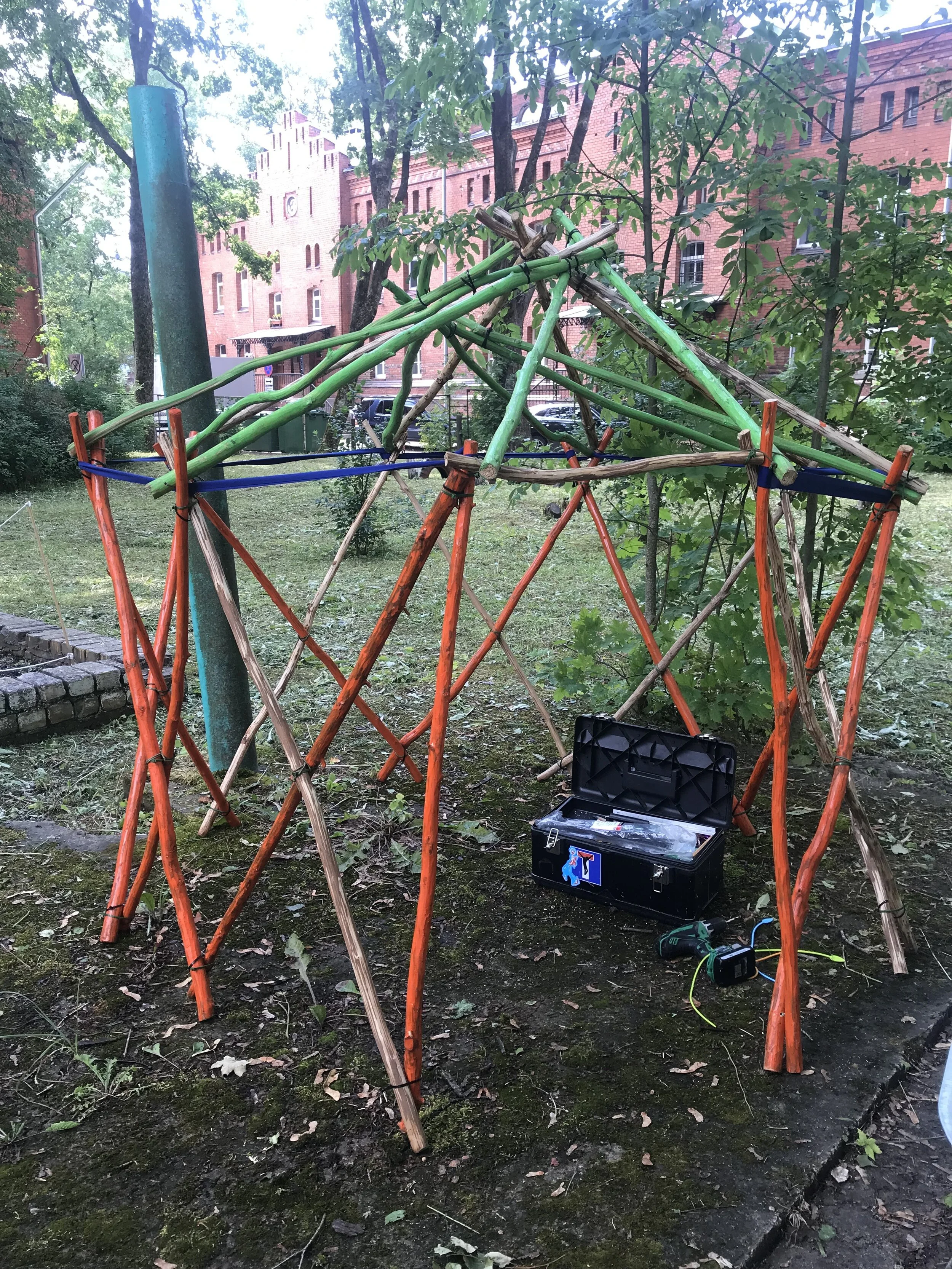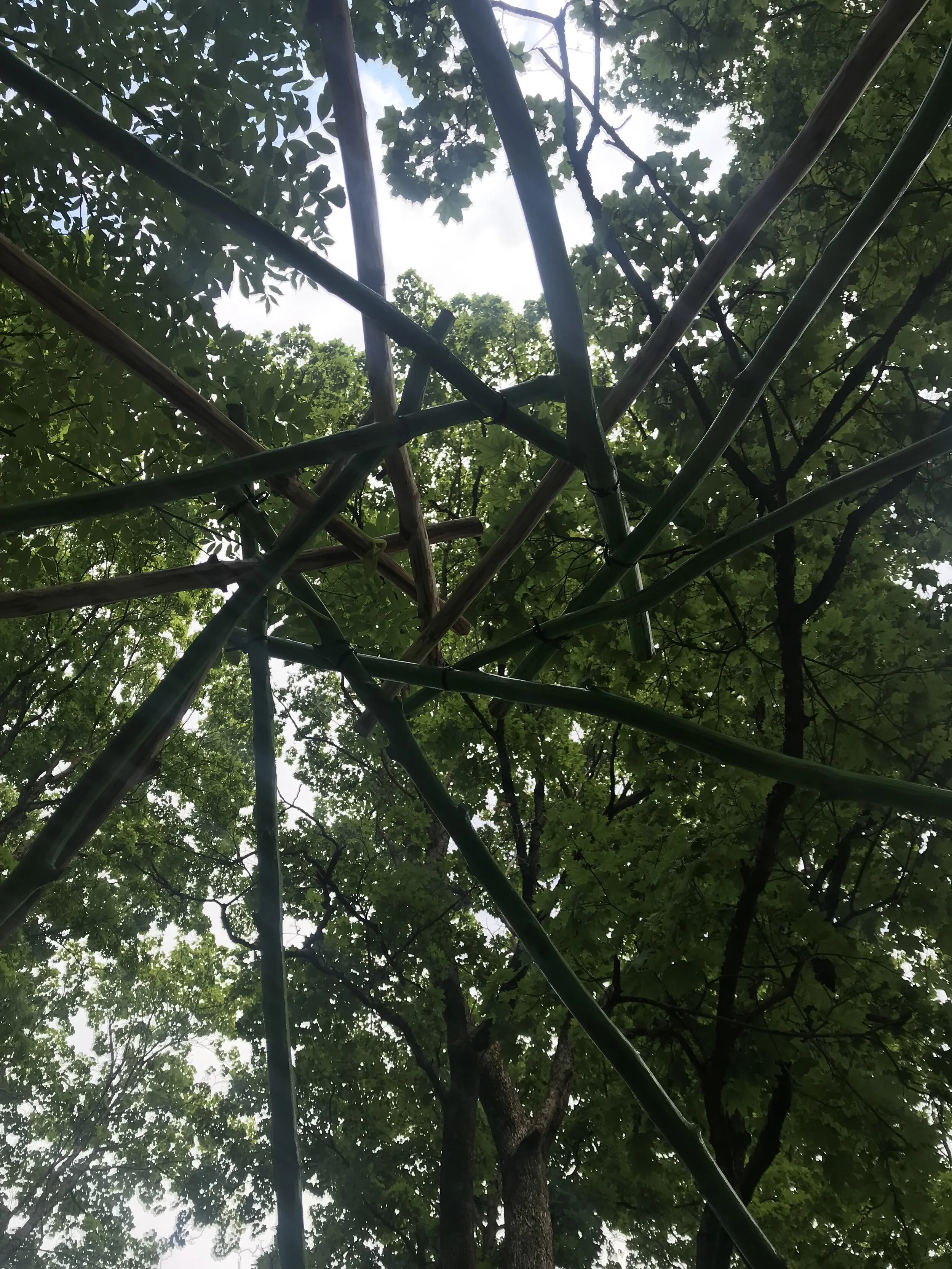Self-supporting frame building basics (yurt)
It was a experiment and learning process for myself as for the attendees of this workshop in Narva, Estonia and emerging community garden Kreenholm Plants, as part of residency at NART July 2021.
Self-supporting frame (also Reciprocal architecture) is known to be based on complex calculations and well as popular in natural building. I wanted to try it for myself if I could simplify it and together at the workshops we could make a small yurt based on these principals.
Calculations and miniature model building was done long before at the art residency Massia in spring 2021, but idea born even earlier when I was working as seamstress for Glen: master yurt maker in Manchester, UK and he retired, but I wanted to continue yurt-making. I am in no way professional woodworker, but a cover maker for outdoor structures, however I was keen to learn simple constructions of frames which can be used for outdoor structure (nomadic building) and believed that anyone can do it: understand basic physics for constructing a yurt, and maybe even make one with just tying sticks together, so I set out to to this experiment together with participants of workshops in Narva.
On first day we learned about basics of a self-supporting frame: 3 sticks and a significance of a triangle:
Then using understanding of a self-supporting frame we attempted to create a yurt frame just with tying sticks to one another. We made a concertina wall first then on the ground put together a reciprocal roof from 8 rods, which we lifted up onto walls, making a primitive yurt:
Photography by Marina Koreshkova
On the second day of the workshop: recalculations had to be made as yurt’s roof turned out to be quite flat on the first attempt. So it was taken off and reconstructed with a higher pith with people from nearby Narva Sotsiaaltöökeskus Maslovi3 (Social-help day centre working with neurodiverse clients). At the end it turned out to be success; we constructed a small yurt using zip-ties and a reciprocal roof for it: where each stick supports other in the circle. This was a fun activity to make a most primitive yurt with no tools just ties.
